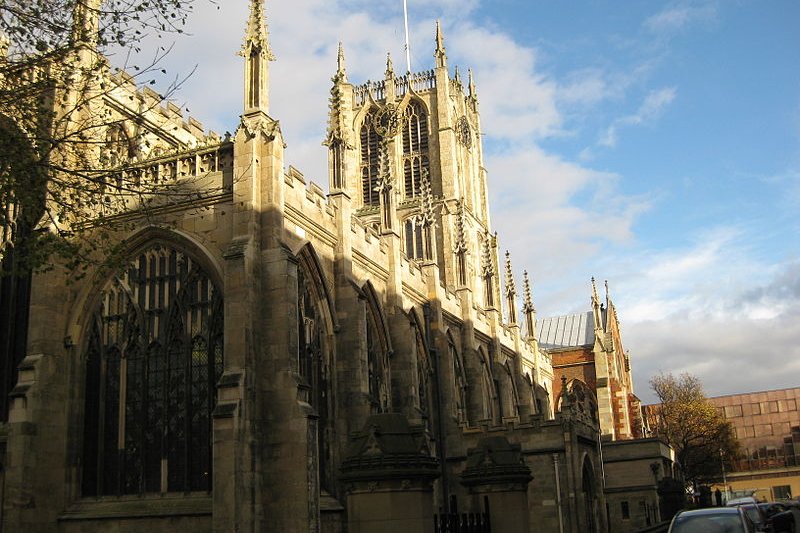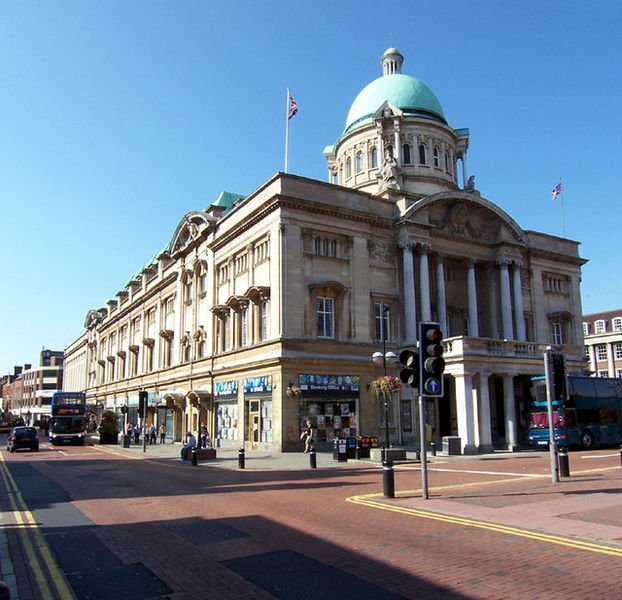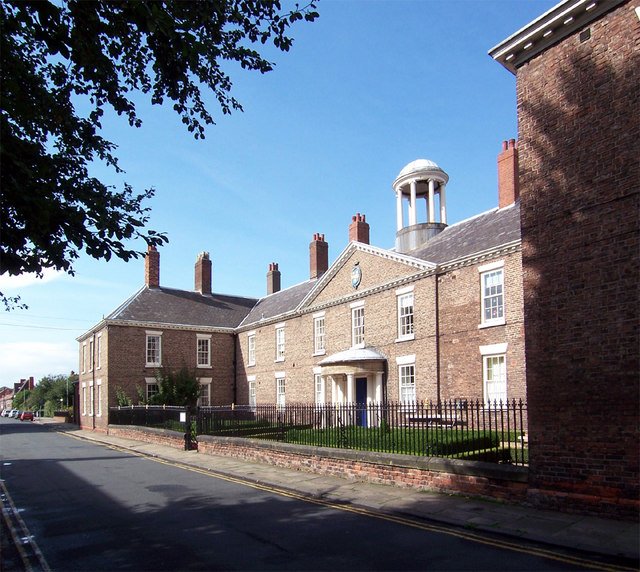 Holy Trinity Church, Hull: Source: https://commons.wikimedia.org/wiki/File:22-SFEC-HULL-20081114.JPG
Holy Trinity Church, Hull: Source: https://commons.wikimedia.org/wiki/File:22-SFEC-HULL-20081114.JPGAuthor: Steve F-E-Cameron

Kingston upon Hull is a city in the ceremonial county of East Riding of Yorkshire. Often known simply as Hull, it covers 71.45 sq km (27.6 sq mi) and has a population of 264,000 people (2012 estimate). The city is at the mouth of the River Hull as it empties into the Humber estuary.
Evidence of human habitation in the Hull area goes back to the Neolithic period. The city was originally known as Hull. In 1299 it was renamed to King's town upon Hull, or Kingston upon Hull, when it was granted a royal charter by King Edward I.
Kingston upon Hull prospered in the 16th and 17th century, resulting in a spur of building activity that created much of its present-day old town. Many of the historic buildings from this period has been well preserved, among them Wilberforce House, which has since been turned into a museum to document the life of its occupant, William Wilberforce.
Kingston upon Hull benefited from the Industrial Revolution, particularly in the second half of the 19th century, when it also became an important passenger port. Thousands of emigrants passed through the Port of Hull on their way to Liverpool and onwards to North America.
 Hull City Hall: Source: https://commons.wikimedia.org/wiki/File:Hull_City_Hall.jpg
Hull City Hall: Source: https://commons.wikimedia.org/wiki/File:Hull_City_Hall.jpgAuthor: David Wright

In 1897, at its height of prosperity, Kingston upon Hull was granted city status, despite it having no cathedral but only a parish church. It derived its income from the whaling industry, and in the same way, when the whaling industry went into decline, so did Hull's fortune. The Second World War brought severe devastation to Kingston upon Hull. It never fully recovered. In the post war years, the city continued to suffer the effects of post-industrial decline.
Today the city of Kingston upon Hull turns its attention to the retail industry as the mainstay of its economy. The city is home to a number of department stores as well as three big shopping centers.
 Charterhouse Hospital, Kingston upon Hull: Source: https://commons.wikimedia.org/wiki/File:The_Charterhouse_Hospital_-_geograph.org.uk_-_243456.jpg
Charterhouse Hospital, Kingston upon Hull: Source: https://commons.wikimedia.org/wiki/File:The_Charterhouse_Hospital_-_geograph.org.uk_-_243456.jpgAuthor: David Wright

Visiting Kingston upon Hull
The main transport terminal in Kingston upon Hall is Hull Paragon Interchange, located in the city center. It serves as terminus for train, coach buses and local buses. You can take a train from London Kings Cross Station to Hull, a journey taking between 2 and a half to 3 hours. There are also trains from Manchester (2 hours away), stopping at Leeds (1 hour away) on the way. If going there by car, take the M18 motorway and then continue east on the M62 motorway.Places of Interest in Kingston upon Hull
- Charterhouse: Historic building dating to 1350, it was established by Sir William de la Pole, the first mayor of Hull, as a Priory of Carthusian monks, and later as the Charterhouse Hospital.
- Holy Trinity Church: Dating back to 1300, this is the largest parish church in England.
- Hull City Hall: Built in 1903, it is one of the buildings in Hull that managed to escape total destruction of Luftwaffe bombings in World War II.
- Maritime Museum: Museum documenting Hull's maritime history, particularly its role as a major whaling port.
- Old Grammar School: Dating back to the 16th century, this is one of the oldest grammar schools in England, now serving as the Hands on History Museum.
- Queens Gardens: Gardens occupying the site of the former Queen's Dock, which was the largest dock in England. There are a number of sights in this area including The Guildhall and the Mick Ronson Memorial Stage.
- Queen Victoria Square: Public square at the heart of Hull with the statue of Queen Victoria and surrounded by historic buildings including the Maritime Museum and City Hall.
- William Wilberforce: English politician remembered for his role in abolishing slavery in Britain.
- The Woolen Warehouse: Historic building dating back to the wool trade in Hull.
- Trinity Quarter: Neighborhood around the market square in front of the Holy Trinity Church.
Kingston upon Hull is  on the Map of cities in England
on the Map of cities in England
 Latest updates on Penang Travel Tips
Latest updates on Penang Travel Tips
Map of Ceremonial Counties of England
About this website

Hi visitor, thank you for reading this page. If you wish to contact me, you may do so through Facebook. Click the link below.

Copyright © 2003-2025 Timothy Tye. All Rights Reserved.

 Go Back
Go Back